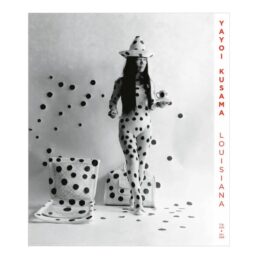

Avant-garde Japanese artist Yayoi Kusama works in many different mediums, including sculpture, painting, performance, books, poems and installation. Her impact can be seen in a wide range of creative movements, including minimalism, pop art, feminist and environment art, and she is viewed as one of Japan’s most influential living artists. Although she trained at the Kyoto Municipal School of Arts and Crafts in the traditional Japanese painting style of Nihonga in 1948, she quickly turned her back on these established artistic conventions and developed her own unique abstract, conceptual style. The major motif in her work is polka dots. Suffering hallucinations since she was a child, the polka dots are a representation of this experience and, for Kusama, the sign of infinity.
Yayoi Kusama lived and worked in New York City throughout the 1960s, a full and active participant of the hippie counter-culture, including staging ‘happenings’ where she covered naked people in polka dots. She returned to Japan in 1973 and has been voluntarily living at the Seiwa Hospital for the Mentally Ill since the mid 1970s. Her uncompromising expression of her personal thoughts, feelings and sexuality make her one of the most challenging and vital of contemporary artists. She continues to exhibit and create installations at museums and galleries across the globe.